Steered by the “Big Three”
Before the invitation to the conference goes out, the US State Department consults with several European governments, including the United Kingdom and France. At the end of June 1938, US delegate Myron C. Taylor holds a preparatory meeting in Paris with French delegate Henry Bérenger and British delegate Michael Palairet. He also speaks with the delegates from Argentina and Brazil and hosts representatives from numerous private organizations.
From July 5, 1938 on, Taylor – in Évian – is in constant contact with Bérenger and the British chief delegate, Lord Winterton, who wanted to place the conference under the auspices of the High Commissioner for Refugees and the “Nansen Office” of the League of Nations. Ultimately, the Americans ensure the independence of the Intergovernmental Committee for Refugees, which emerges from the conference. They are able to do so partly thanks to the many receptions that Taylor hosts in Évian, but also due to expectations that Winterton and Bérenger would be appointed the committee’s chair and deputy chair, respectively.

Lord Winterton, Myron C. Taylor and Senator Bérenger in the Hotel Royal park, July 6, 1938
On July 6, 1938 it remains unclear who will chair the conference. The French turn down the chairmanship because the conference has been initiated by US president Roosevelt. At the last minute it is agreed that Henry Bérenger of France will open and close the conference as honorary president, and Myron C. Taylor will chair the working sessions as conference president.
National Archives, College Park, MD
Lord Winterton, Myron C. Taylor and Senator Bérenger in the Hotel Royal park, July 6, 1938
On July 6, 1938 it remains unclear who will chair the conference. The French turn down the chairmanship because the conference has been initiated by US president Roosevelt. At the last minute it is agreed that Henry Bérenger of France will open and close the conference as honorary president, and Myron C. Taylor will chair the working sessions as conference president.
National Archives, College Park, MD
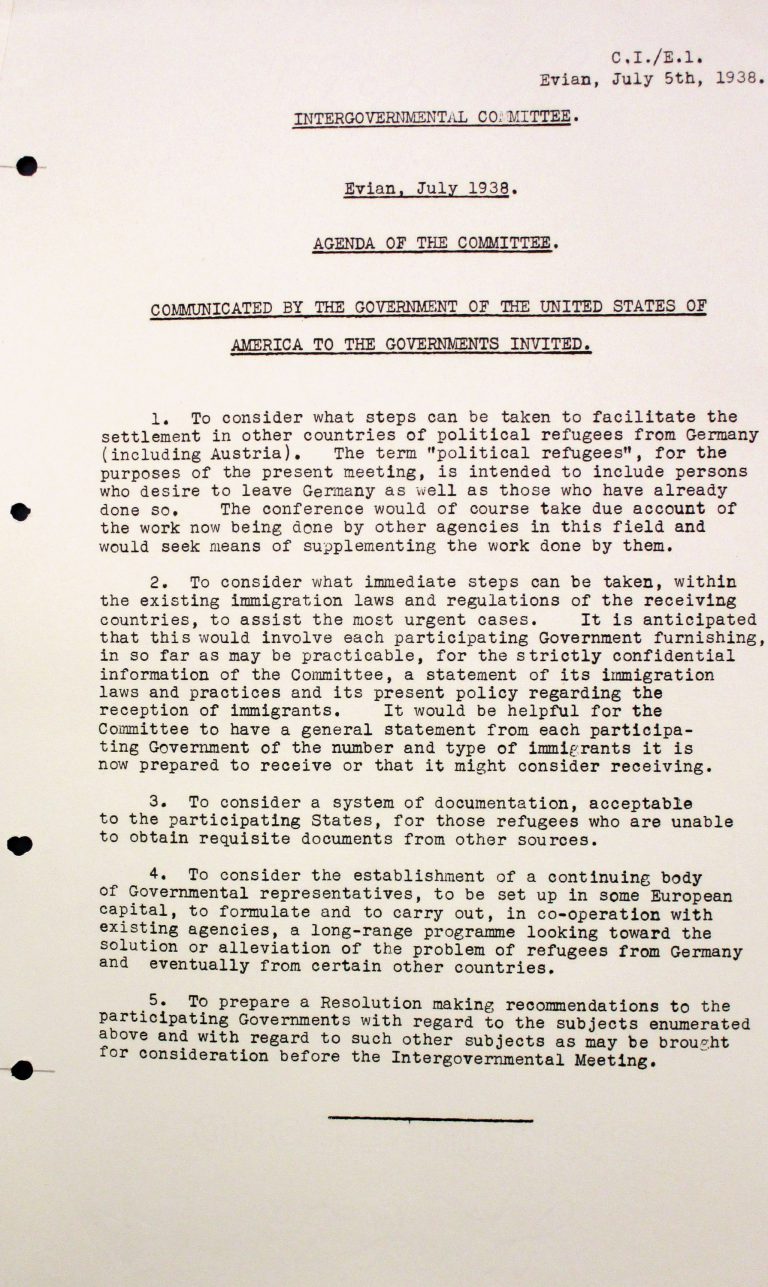
US government conference agenda, July 5, 1938
From the outset, the Americans have referred to the conference as the “Intergovernmental Committee,” which actually is supposed to be established at its conclusion. Although the conference has been triggered by the flight of massive numbers of Jews from Germany and from Austria, participants refer only to “political refugees” during the event. The final resolution refers to “involuntary emigrants.”
Franklin D. Roosevelt Library, Hyde Park, NY
US government conference agenda, July 5, 1938
From the outset, the Americans have referred to the conference as the “Intergovernmental Committee,” which actually is supposed to be established at its conclusion. Although the conference has been triggered by the flight of massive numbers of Jews from Germany and from Austria, participants refer only to “political refugees” during the event. The final resolution refers to “involuntary emigrants.”
Franklin D. Roosevelt Library, Hyde Park, NY
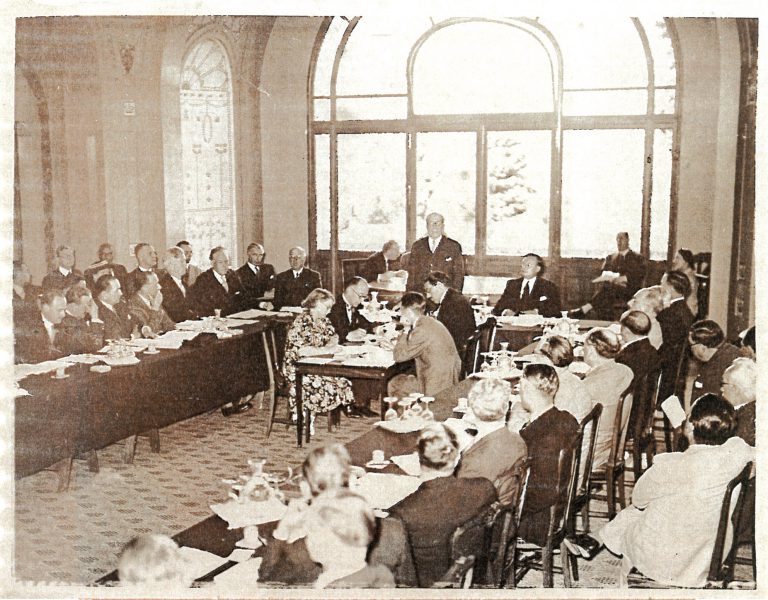
First public session of the conference, with opening address by Senator Bérenger, July 6, 1938
Archives Nationales, Paris, 11 AR/800
First public session of the conference, with opening address by Senator Bérenger, July 6, 1938
Archives Nationales, Paris, 11 AR/800

Conference management: seating plan
United Nations Archives, Genf
Conference management: seating plan
United Nations Archives, Genf
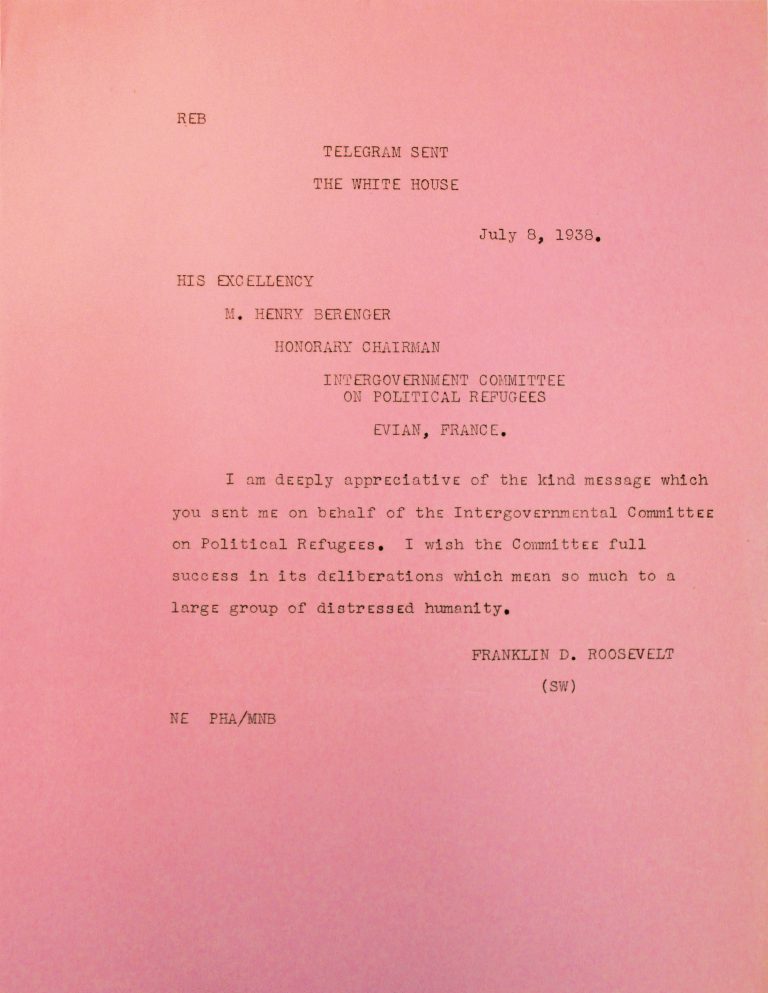
President Roosevelt to the conference’s honorary president, Henry Bérenger, July 8, 1938
National Archives, College Park, MD
President Roosevelt to the conference’s honorary president, Henry Bérenger, July 8, 1938
National Archives, College Park, MD
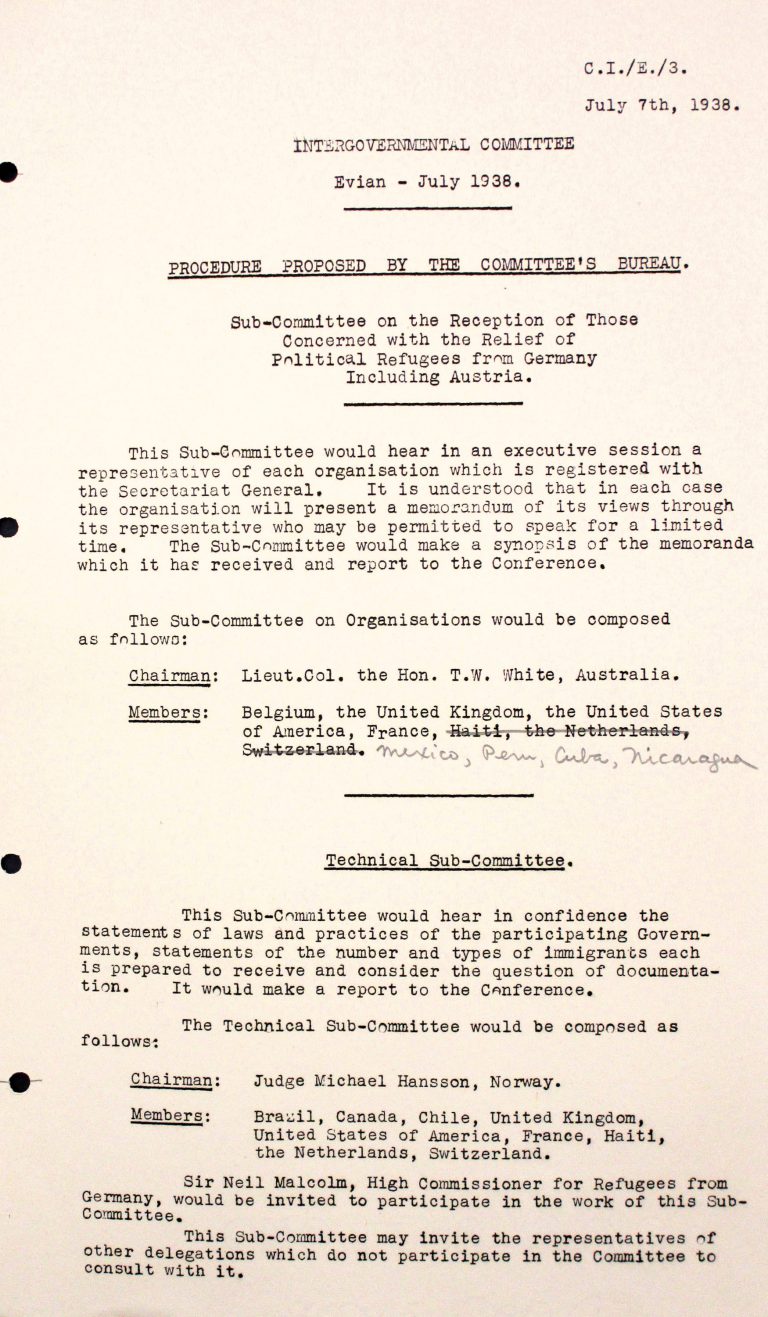
Conference leadership: proposal on working methods, July 7, 1938
The conference has two subcommittees: One will hear the representatives of non-governmental organizations and summarize their opinions. The other – the Technical Subcommittee – will meet privately to discuss immigration regulations in the participating states. No state sees any possibilities to receive additional refugees on the basis of its regulations.
Franklin D. Roosevelt Library, Hyde Park, NY
Conference leadership: proposal on working methods, July 7, 1938
The conference has two subcommittees: One will hear the representatives of non-governmental organizations and summarize their opinions. The other – the Technical Subcommittee – will meet privately to discuss immigration regulations in the participating states. No state sees any possibilities to receive additional refugees on the basis of its regulations.
Franklin D. Roosevelt Library, Hyde Park, NY

Sir Neill Malcolm, 1931
Former Major General Sir Neill Malcolm, League of Nations High Commissioner for Refugees from Germany since 1936, receives a prominent spot at the conference, attending the non-public meetings of both subcommittees.
Photo: Walter Stoneman / National Portrait Gallery, London
Sir Neill Malcolm, 1931
Former Major General Sir Neill Malcolm, League of Nations High Commissioner for Refugees from Germany since 1936, receives a prominent spot at the conference, attending the non-public meetings of both subcommittees.
Photo: Walter Stoneman / National Portrait Gallery, London
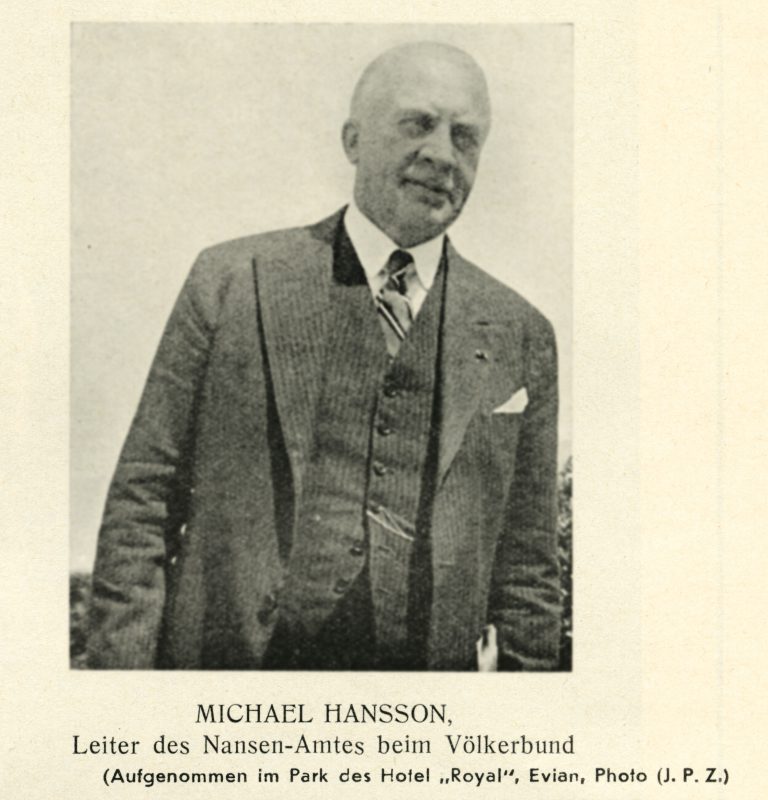
Michael Hansson in Évian
Norway’s delegate – Michael Hansson, president of the “Nansen Office” since 1936 – is named chair of the conference’s Technical Sub-Committee.
Jüdische Presszentrale Zürich, Nr. 999/1.000, July 15, 1938 / Archiv für Zeitgeschichte / ETH Zürich
Michael Hansson in Évian
Norway’s delegate – Michael Hansson, president of the “Nansen Office” since 1936 – is named chair of the conference’s Technical Sub-Committee.
Jüdische Presszentrale Zürich, Nr. 999/1.000, July 15, 1938 / Archiv für Zeitgeschichte / ETH Zürich

Comparison of the American and the Franco-British drafts for the conference’s final resolution, undated (July 1938), p. 1/7
An American-British-French editorial team prepares a draft for the conference’s final resolution. After the “Big Three” have agreed on the text, Taylor must assuage the fears of numerous Central American states that approval could lead to trade sanctions by the German Reich.
National Archives, College Park, MD
Comparison of the American and the Franco-British drafts for the conference’s final resolution, undated (July 1938), p. 1/7
An American-British-French editorial team prepares a draft for the conference’s final resolution. After the “Big Three” have agreed on the text, Taylor must assuage the fears of numerous Central American states that approval could lead to trade sanctions by the German Reich.
National Archives, College Park, MD
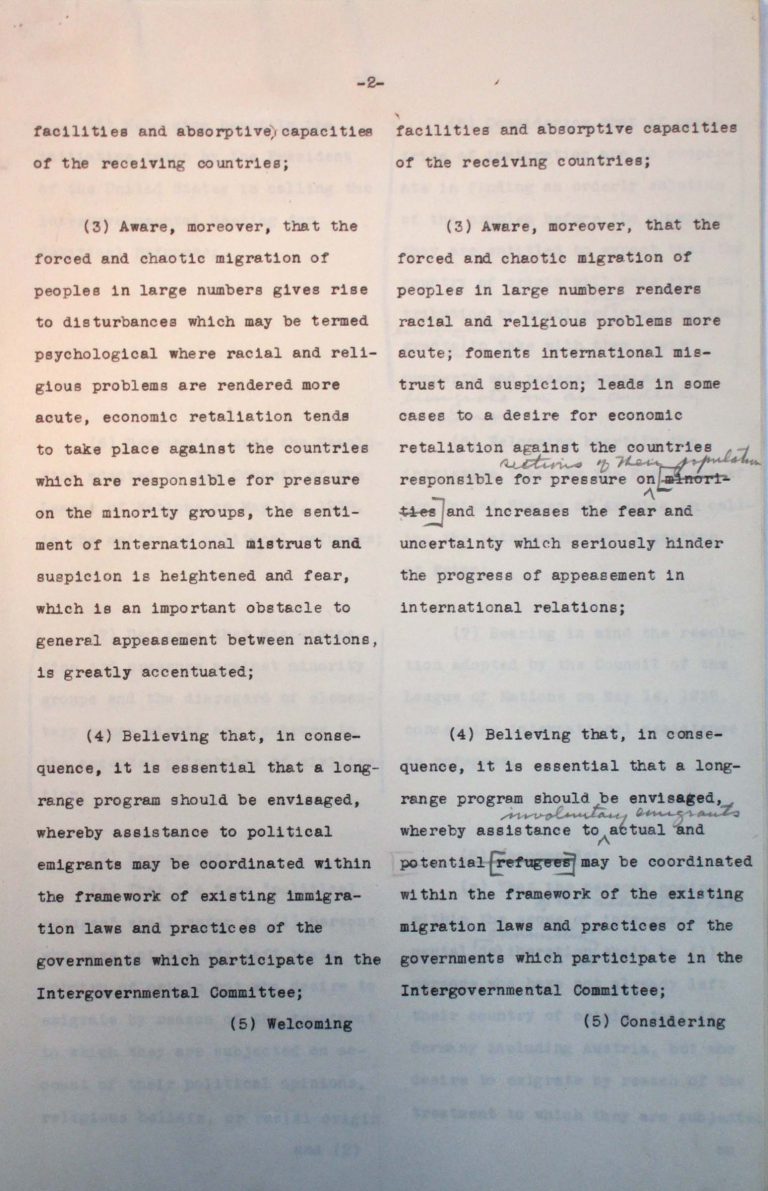
Comparison of the American and the Franco-British drafts for the conference’s final resolution, undated (July 1938), p. 2/7
An American-British-French editorial team prepares a draft for the conference’s final resolution. After the “Big Three” have agreed on the text, Taylor must assuage the fears of numerous Central American states that approval could lead to trade sanctions by the German Reich.
National Archives, College Park, MD
Comparison of the American and the Franco-British drafts for the conference’s final resolution, undated (July 1938), p. 2/7
An American-British-French editorial team prepares a draft for the conference’s final resolution. After the “Big Three” have agreed on the text, Taylor must assuage the fears of numerous Central American states that approval could lead to trade sanctions by the German Reich.
National Archives, College Park, MD
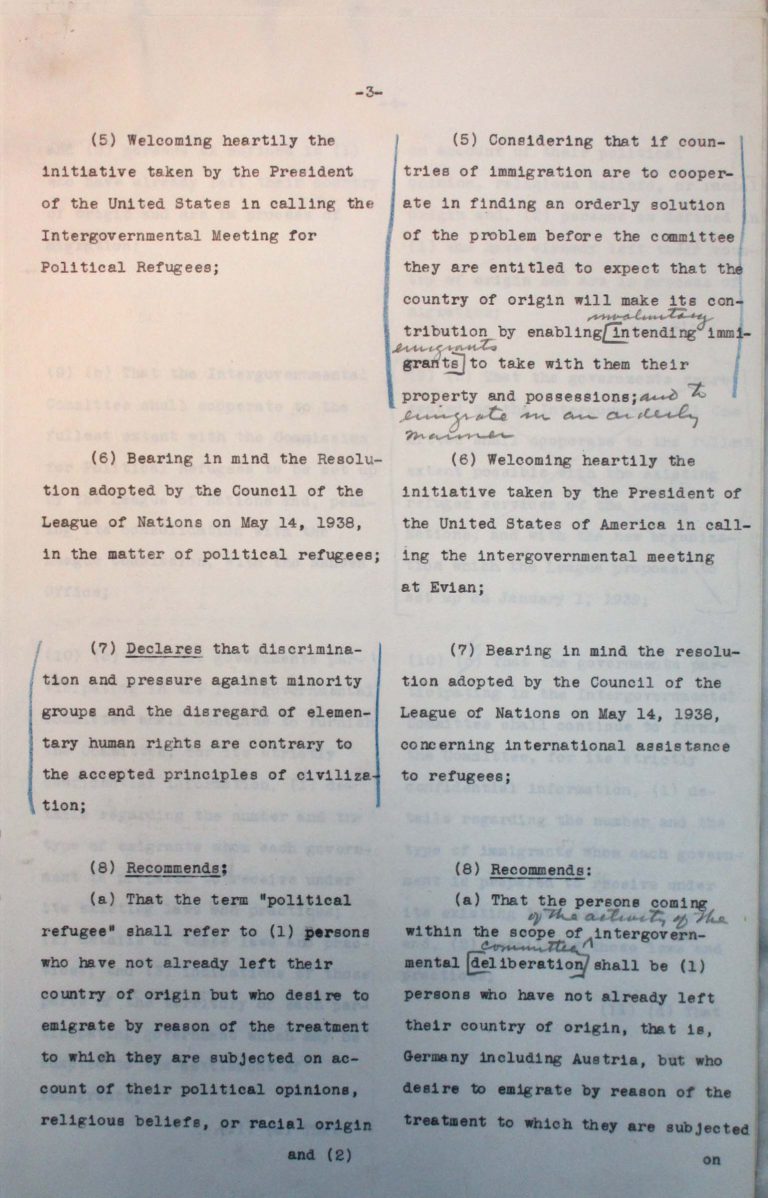
Comparison of the American and the Franco-British drafts for the conference’s final resolution, undated (July 1938), p. 3/7
An American-British-French editorial team prepares a draft for the conference’s final resolution. After the “Big Three” have agreed on the text, Taylor must assuage the fears of numerous Central American states that approval could lead to trade sanctions by the German Reich.
National Archives, College Park, MD
Comparison of the American and the Franco-British drafts for the conference’s final resolution, undated (July 1938), p. 3/7
An American-British-French editorial team prepares a draft for the conference’s final resolution. After the “Big Three” have agreed on the text, Taylor must assuage the fears of numerous Central American states that approval could lead to trade sanctions by the German Reich.
National Archives, College Park, MD

Comparison of the American and the Franco-British drafts for the conference’s final resolution, undated (July 1938), p. 4/7
An American-British-French editorial team prepares a draft for the conference’s final resolution. After the “Big Three” have agreed on the text, Taylor must assuage the fears of numerous Central American states that approval could lead to trade sanctions by the German Reich.
National Archives, College Park, MD
Comparison of the American and the Franco-British drafts for the conference’s final resolution, undated (July 1938), p. 4/7
An American-British-French editorial team prepares a draft for the conference’s final resolution. After the “Big Three” have agreed on the text, Taylor must assuage the fears of numerous Central American states that approval could lead to trade sanctions by the German Reich.
National Archives, College Park, MD
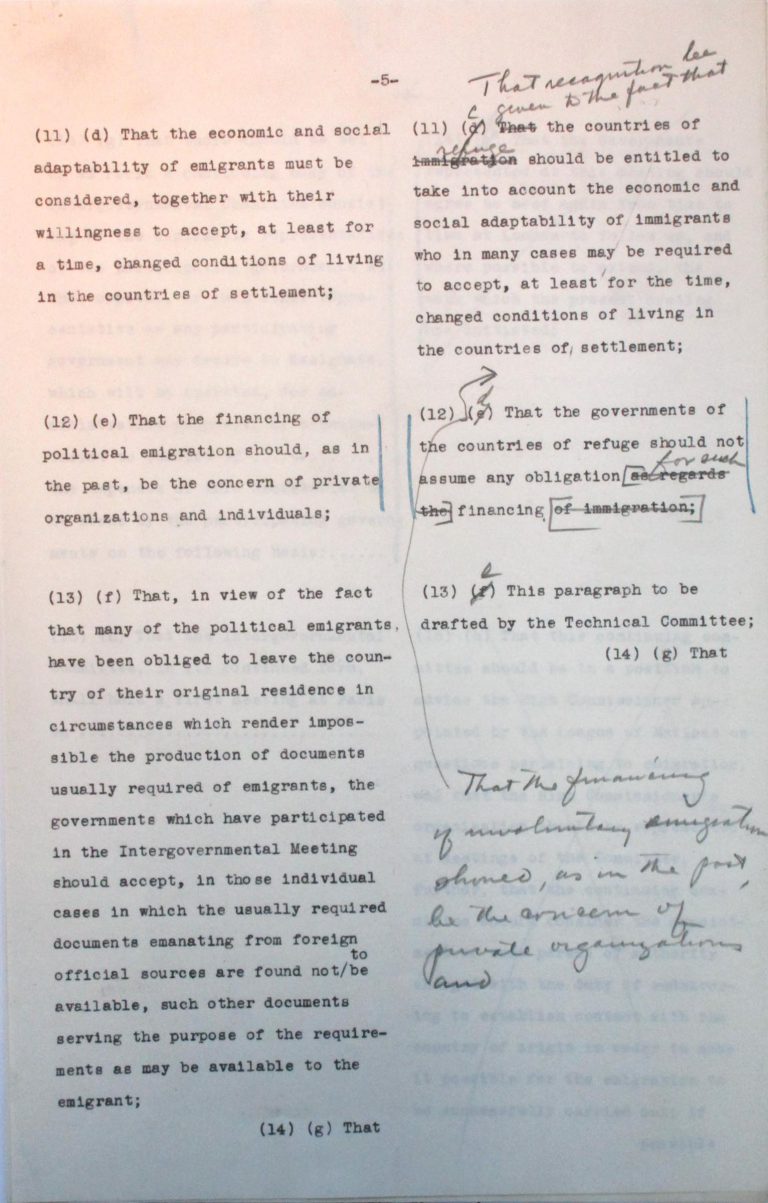
Comparison of the American and the Franco-British drafts for the conference’s final resolution, undated (July 1938), p. 5/7
An American-British-French editorial team prepares a draft for the conference’s final resolution. After the “Big Three” have agreed on the text, Taylor must assuage the fears of numerous Central American states that approval could lead to trade sanctions by the German Reich.
National Archives, College Park, MD
Comparison of the American and the Franco-British drafts for the conference’s final resolution, undated (July 1938), p. 5/7
An American-British-French editorial team prepares a draft for the conference’s final resolution. After the “Big Three” have agreed on the text, Taylor must assuage the fears of numerous Central American states that approval could lead to trade sanctions by the German Reich.
National Archives, College Park, MD

Comparison of the American and the Franco-British drafts for the conference’s final resolution, undated (July 1938), p. 6/7
An American-British-French editorial team prepares a draft for the conference’s final resolution. After the “Big Three” have agreed on the text, Taylor must assuage the fears of numerous Central American states that approval could lead to trade sanctions by the German Reich.
National Archives, College Park, MD
Comparison of the American and the Franco-British drafts for the conference’s final resolution, undated (July 1938), p. 6/7
An American-British-French editorial team prepares a draft for the conference’s final resolution. After the “Big Three” have agreed on the text, Taylor must assuage the fears of numerous Central American states that approval could lead to trade sanctions by the German Reich.
National Archives, College Park, MD

Comparison of the American and the Franco-British drafts for the conference’s final resolution, undated (July 1938), p. 7/7
An American-British-French editorial team prepares a draft for the conference’s final resolution. After the “Big Three” have agreed on the text, Taylor must assuage the fears of numerous Central American states that approval could lead to trade sanctions by the German Reich.
National Archives, College Park, MD
Comparison of the American and the Franco-British drafts for the conference’s final resolution, undated (July 1938), p. 7/7
An American-British-French editorial team prepares a draft for the conference’s final resolution. After the “Big Three” have agreed on the text, Taylor must assuage the fears of numerous Central American states that approval could lead to trade sanctions by the German Reich.
National Archives, College Park, MD














